What is a PLN?
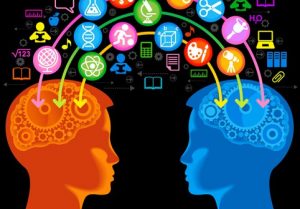 A Professional Learning Network or PLN is a tool that uses social media and technology to collect, communicate, collaborate, curate and create with connected colleagues anywhere at any time. According to Dori Dignti, one of the first authors to write about PLNs, “The PLN consists of relationships between individuals where the goal is enhancement of mutual learning. The currency of the PLN is learning in the form of feedback, insights, documentation, new contacts, or new business opportunities. It is based on reciprocity and a level of trust that each party is actively seeking value-added information for the other.” In regards to education, PLNs are becoming extremely popular with the evolution of technology in the classroom and social media sites such as Twitter, Instagram and Facebook. PLNs allow educators to connect with others globally by sharing what is occurring in their classroom daily, as well as helpful tips and resources. Currently, a connected educator is someone who collaborates online and uses a range of tools to build their own PLN. Therefore, PLNs are vital resources for educators today.
A Professional Learning Network or PLN is a tool that uses social media and technology to collect, communicate, collaborate, curate and create with connected colleagues anywhere at any time. According to Dori Dignti, one of the first authors to write about PLNs, “The PLN consists of relationships between individuals where the goal is enhancement of mutual learning. The currency of the PLN is learning in the form of feedback, insights, documentation, new contacts, or new business opportunities. It is based on reciprocity and a level of trust that each party is actively seeking value-added information for the other.” In regards to education, PLNs are becoming extremely popular with the evolution of technology in the classroom and social media sites such as Twitter, Instagram and Facebook. PLNs allow educators to connect with others globally by sharing what is occurring in their classroom daily, as well as helpful tips and resources. Currently, a connected educator is someone who collaborates online and uses a range of tools to build their own PLN. Therefore, PLNs are vital resources for educators today.
Why should Educators create PLns?
Here is a list as to why educators should create their own Personal Learning Networks: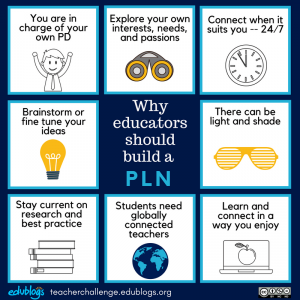
- You are in charge of your own professional development. Professional Development is no longer something that you have to “sit and get”.
- You can learn and connect in a way that you enjoy. This might be via videos, podcasts, text, social media, Skype, blogging or whatever best suits your interests.
- You can explore your own interests, needs, and passions as well as the interests of your students.
- 24/7 learning offers the flexibility to learn and connect at a time that suits you. With PLNs, you can decide how much time you want to invest and when.
- You can engage in a general chat about education (or anything) to debrief, laugh, or unwind. You can also engage in deep discussion, and reflection that can really challenge and transform your thinking and teaching.
- You can stay current on research and best practice, regardless of whether this information is being discussed in your own school, district or country.
- A PLN allows for broad brainstorming or fine tuning. You might know very little about a certain topic and ask your PLN for any entry points into exploring the concept or you may have already done a lot of work on a topic and use your PLN to fine tune your ideas and resources.
- Having your own PLN is a key way to also help your students connect with others and start developing their own networks.
My own experience with PLNs
When I first heard the words professional learning network I was extremely confused. I had no idea what a PLN was as I had never seen an educator use a PLN. After a little further research into the term, I thought to myself how can I possibly connect with other educators through PLNs and how should I go about creating my own PLN while I am still in college. Despite being confused and overwhelmed at first, after being taught by Ms. Davis in my ECI 201 class as well as a guest speaker I feel confident about moving forward using social media to create my own customized PLN.
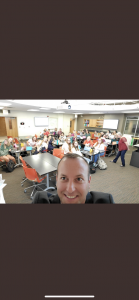
Kyle Hamstra’s visit to our ECI 201 classroom
As a part of my ECI 201 class, we had the opportunity to learn all about PLN’s from guest speaker, Kyle Hamstra. Despite the variety of tools that can be used for creating PLNs, Mr. Hamstra focused on using twitter as a PLN, and creating a hashtag community around your curriculum. To create his own PLN, Mr. Hamstra turned to twitter created various hashtags such as #hashtag180 to catalog his ideas and lessons. Mr. Hamstra explained by creating our hashtags, we as future educators could have a wealth of integrated, efficiently-organized resources and maximize the potential of twitter by creating a community around various curricula. For example, Mr. Hamstra used the hashtag #sci5E11 to feature topics relating to a fifth grade science weather unit objective that can be used by any teacher. Educators have the opportunity to supplement their own curriculum resources through the power of the hashtag and can connect with other educators teaching students the same topics. According to Mr. Hamstra, “Most importantly, students benefit when teachers can search a curriculum-specific library of educator-hashtagged resources. Educators must connect with each other, continuously improving, sharing and honing our ideas, skills, and resources for our students.” This presentation forever changed the way I view PLNs. Through Mr. Hamstra, I found the importance of using Twitter as a PLN as well as the importance of hashtags. Currently as a part of my ECI 201 class, I have an educational twitter which I use #eci201 to catalog my ideas and thoughts. However, I plan to create more hashtags as I progress through student teaching as well as teaching in the future to expand my PLN, curate my own lessons, and gain ideas from other teachers.
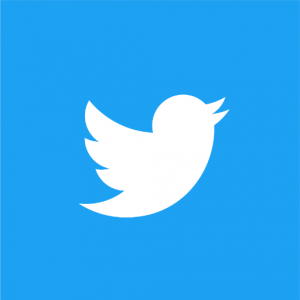
What is the purpose of Twitter?
Twitter is a social networking site on which users can post 140 character status updates, otherwise known as “tweets”, that can be seen by anyone who has chosen to follow them. Within the tweet, users can link to other articles, videos or use hashtags to connect to a wider audience. In addition to composing tweets, users can scroll through their Twitter homepage to see what other people or their followers are tweeting. For instance, users can utilize Twitter for professional accounts and choose to follow others in the same professional fields. Alternatively, Twitter can be used for entertainment purposes as users can follow celebrities or stay in touch with the latest pop culture trends. Despite often being used for entertainment purposes, Twitter allows educators to professionally connect and share ideas with one another.
Twitter in the classroom
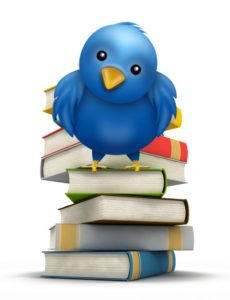 As discussed by guest speaker, Kyle Hamstra, Twitter is used by educators globally. Twitter allows teachers to share their ideas as well as lesson plans in a single, easily accessible place. Teachers can discover and review other lesson plans created by other educators by following educational accounts or other teachers. Also, teachers can curate their own materials by coming up with specific hashtags for the topic they are teaching, the name of the specific course, or the goal in the common curriculum which their lesson meets. Moreover, Twitter not only provides teachers the opportunity to connect with other educators, but their current students, former students, parents, and colleagues. Teachers can use Twitter to send information to parents including classroom announcements or what their child learned in class. This allows parents to further engage in their child’s learning as they can know what is occurring daily in the classroom, which in turn can create conversations at home based on the topics learned at school. Finally, students can learn about digital citizenship as they experiment with Twitter in the classroom. By integrating Twitter in the classroom teachers can not only keep students engaged but they can also teach them the etiquette and responsibility of posting on social media. If students at a young age know how to properly use social media for educational purposes they will feel more comfortable and safe using technology in both educational settings and in the real world.
As discussed by guest speaker, Kyle Hamstra, Twitter is used by educators globally. Twitter allows teachers to share their ideas as well as lesson plans in a single, easily accessible place. Teachers can discover and review other lesson plans created by other educators by following educational accounts or other teachers. Also, teachers can curate their own materials by coming up with specific hashtags for the topic they are teaching, the name of the specific course, or the goal in the common curriculum which their lesson meets. Moreover, Twitter not only provides teachers the opportunity to connect with other educators, but their current students, former students, parents, and colleagues. Teachers can use Twitter to send information to parents including classroom announcements or what their child learned in class. This allows parents to further engage in their child’s learning as they can know what is occurring daily in the classroom, which in turn can create conversations at home based on the topics learned at school. Finally, students can learn about digital citizenship as they experiment with Twitter in the classroom. By integrating Twitter in the classroom teachers can not only keep students engaged but they can also teach them the etiquette and responsibility of posting on social media. If students at a young age know how to properly use social media for educational purposes they will feel more comfortable and safe using technology in both educational settings and in the real world.
As a part of my ECI 201 course, I was required to perform a Twitter Scavenger Hunt, for which I was tasked with following educational accounts. After researching, I found a plethora of examples of teachers that use Twitter in their classroom. One of which was Katie Hammer (@mrshammer2ndgrade) who uses Twitter for various activities with her students. Hearing about educational Twitter accounts, Katie Hammer decided to implement Twitter as a learning tool for her students by slowly integrating Twitter in her classroom. She first had students sharing classroom activity information and then had students express messages about the “what” and “why” of their learning. Eventually, she had her students progress to tweeting a concise and complete story about their favorite pets. According to Mrs. Hammer, beyond the benefits of student learning, twitter opened her classroom to the world and made her a more reflective and effective teacher.
Another example of a teacher using Twitter in their classroom is Nam Ngo Thanh (@mrnamvas). Nam Ngo Thanh is an example of how educators can connect globally through Twitter as he teaches 5th grade at the Vietnam Australia International School in Ho Chi Minh City, Vietnam. When he first started using Twitter, Mr. Thanh created an account for his whole class allowing all students access. In the words of Mr. Thanh, “Every time the children have activities at home, they can use Twitter to share things with their classmates such as a photograph or a video recorded by them. After each Tweet, they write their names at the end. Their friends can get this interesting sharing anytime. In fact, the children proved to be extremely fascinated with this new job.” By sharing a Twitter account with his class, Mr. Thanh was able to increase students awareness of digital citizenship as well as make learning more engaging for his students and parents.
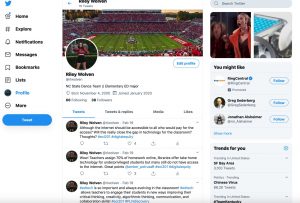 Like Mr. Hamstra, Mrs. Hammer, and Mr. Thanh, I plan on using Twitter as a tool in my future classroom. I currently have a professional twitter account (@rlwolven) as a result of my ECI 201 class, but I intend to turn my professional account into a classroom account when I become an elementary school teacher. I plan on using my Twitter with my students in various subjects such as reading, writing, science, history and even math. Each day I will allow my students to use the class Twitter account to respond to the question of the day, do nows, or other daily writing prompts. I also intend to allow my students to follow other educational accounts globally so they can make connections with other students and further enhance their own understanding of different cultures. In addition to allowing my students to use the classroom Twitter, I will also encourage parents/ guardians to follow the classroom Twitter account as well. I will tweet reminders as well as the topics their students are learning so they can further enhance education at home. Therefore, Twitter will be a vital tool in my future classroom.
Like Mr. Hamstra, Mrs. Hammer, and Mr. Thanh, I plan on using Twitter as a tool in my future classroom. I currently have a professional twitter account (@rlwolven) as a result of my ECI 201 class, but I intend to turn my professional account into a classroom account when I become an elementary school teacher. I plan on using my Twitter with my students in various subjects such as reading, writing, science, history and even math. Each day I will allow my students to use the class Twitter account to respond to the question of the day, do nows, or other daily writing prompts. I also intend to allow my students to follow other educational accounts globally so they can make connections with other students and further enhance their own understanding of different cultures. In addition to allowing my students to use the classroom Twitter, I will also encourage parents/ guardians to follow the classroom Twitter account as well. I will tweet reminders as well as the topics their students are learning so they can further enhance education at home. Therefore, Twitter will be a vital tool in my future classroom.
Discovery Hastags
Another great resource for educators is discovery hashtags. These simple phrases can give educators insight into trending educational movements as well as classroom resources. All one must do is type in key words or phrases in the search feature of Twitter. As a part of my ECI 201 Twitter Scavenger Hunt, I was required to research a hashtag related to education; I choose the hashtag #edtech. In just seconds, I was astonished to find thousands of tweets and various forms of technology other educators used in their classroom. I plan on using discovery hashtags in the future to research problems occurring in educational settings as well as find new technologies to further engage my students. Here are some suggested discovery hashtags that can be used by all educators:
Educational Twitter Chats
I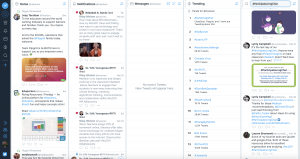 n addition to discovery hashtags, educators can find various materials through Twitter Chats. A twitter chat is a scheduled organized topical conversation on Twitter based on specific hashtag. Twitter Chats occur daily and at various times so they can be performed at the user’s leisure. Normally, users can find a list of times and days specific educational Twitter Chats will take place. By logging on to the website, Tweet Deck, users can search for the specific hashtags related to the chat. As the chat starts, users are promoted with various questions or a single inquiry, and choose how much they want to participate. Overall, the purpose of educational Twitter chats are to share user’s own thoughts and opinions while gaining new perspectives from the tweets of other current or future educators.
n addition to discovery hashtags, educators can find various materials through Twitter Chats. A twitter chat is a scheduled organized topical conversation on Twitter based on specific hashtag. Twitter Chats occur daily and at various times so they can be performed at the user’s leisure. Normally, users can find a list of times and days specific educational Twitter Chats will take place. By logging on to the website, Tweet Deck, users can search for the specific hashtags related to the chat. As the chat starts, users are promoted with various questions or a single inquiry, and choose how much they want to participate. Overall, the purpose of educational Twitter chats are to share user’s own thoughts and opinions while gaining new perspectives from the tweets of other current or future educators.
As a part of my Twitter Scavenger Hunt for ECI 201, I was required to participate in my own educational Twitter Chat. Having never experienced a Twitter Chat before, I was extremely nervous offering my insights as student and not an actual teacher. After doing some research into educational Twitter Chats occurring, I found a slow moving chat that used the hashtag ##ParticipateLrngChat, which asked educators to share about their favorite ed tech tools. By participating and following the hashtag throughout the week I was able to find some amazing tools suggested by other educators that I would love to use in my future classroom. For instance, many of the teachers suggested the website Kahoot for reviewing various topics. After further research and personal experience using the website, I found out that Kahoot allows educators to make free quizzes or use the quizzes of other users to test their students in real time. When playing these quizzes, students answer via technology, have multiple answer choices, and set amount of time to answer each question. I plan on using this tool in my future classroom as it not only is a great tool to see how much my students are learning but it is also fun and engaging for children as well.
Conclusions
Despite being a future elementary educator, I love the idea of using Twitter in my future classroom as well as using Twitter to expand my own PLN. Before ECI 201, I did not know that PLNs and Twitter could be used to better the education of teachers as well as their students. With the evolution of technology in educational settings, PLN’s have become increasingly popular in the form of social media. Specifically, Twitter has become a valuable resource for teachers to expand their connections, curate materials, and further their PLNs. As a future elementary teacher, I see the influence of technology in the lives of students as well as the importance of teaching students how to properly use technology as digital citizens. I therefore, plan on connecting with other educators as well as developing my own PLN through Twitter, and educating my students through the use of Twitter.